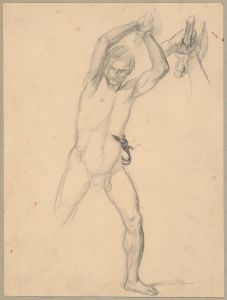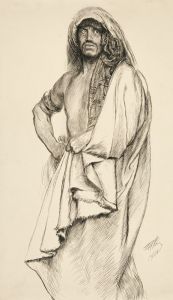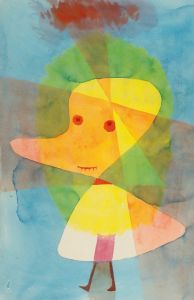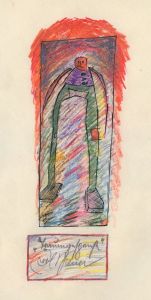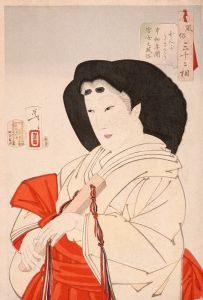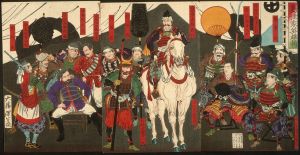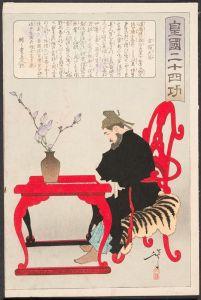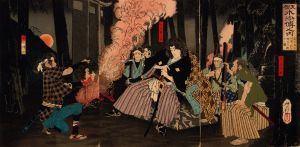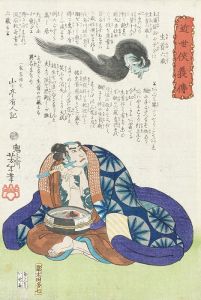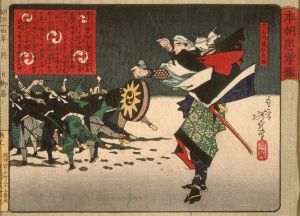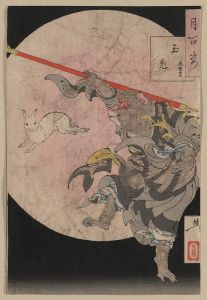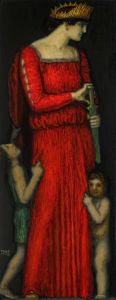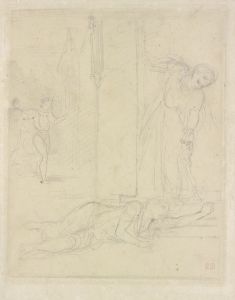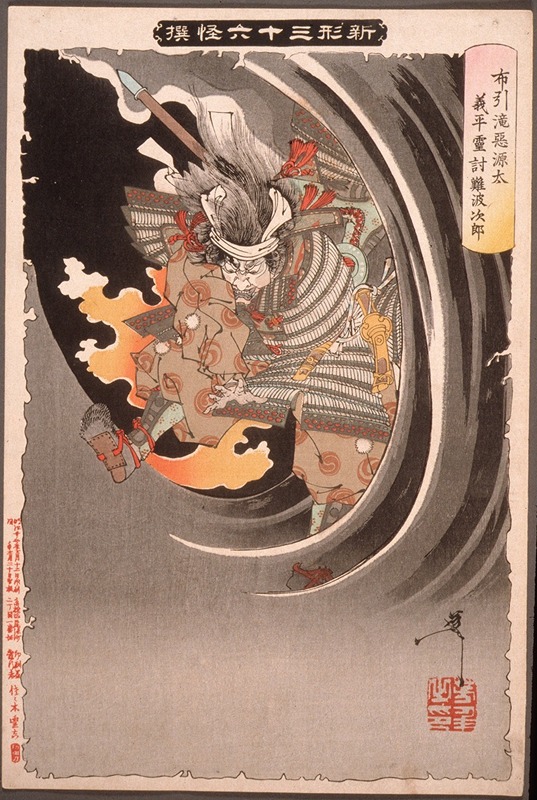
The Ghost of Akugenta Yoshihira Attacking His Executioner Namba Jirō at Nunobiki Waterfall
A hand-painted replica of Tsukioka Yoshitoshi’s masterpiece The Ghost of Akugenta Yoshihira Attacking His Executioner Namba Jirō at Nunobiki Waterfall, meticulously crafted by professional artists to capture the true essence of the original. Each piece is created with museum-quality canvas and rare mineral pigments, carefully painted by experienced artists with delicate brushstrokes and rich, layered colors to perfectly recreate the texture of the original artwork. Unlike machine-printed reproductions, this hand-painted version brings the painting to life, infused with the artist’s emotions and skill in every stroke. Whether for personal collection or home decoration, it instantly elevates the artistic atmosphere of any space.
Tsukioka Yoshitoshi (1839–1892) was a prominent Japanese ukiyo-e artist, renowned for his innovative approach to woodblock printing during the late Edo and early Meiji periods. His work is characterized by its dramatic intensity, vivid imagery, and exploration of themes such as the supernatural, historical events, and the human condition. One of his notable works is "The Ghost of Akugenta Yoshihira Attacking His Executioner Namba Jirō at Nunobiki Waterfall."
This artwork is part of Yoshitoshi's series "New Forms of Thirty-Six Ghosts" (Shinkei Sanjūrokkaisen), which was published between 1889 and 1892. The series is celebrated for its imaginative depictions of ghostly apparitions and supernatural events, drawing from Japanese folklore, history, and literature. Yoshitoshi's ability to blend traditional ukiyo-e techniques with modern sensibilities is evident in this series, making it a significant contribution to the genre.
"The Ghost of Akugenta Yoshihira Attacking His Executioner Namba Jirō at Nunobiki Waterfall" illustrates a dramatic and haunting scene. The subject of the print, Akugenta Yoshihira, was a historical figure from the Heian period, known for his tragic fate. Yoshihira was the son of Minamoto no Yoshitomo, a prominent samurai leader. Following the Heiji Rebellion in 1160, Yoshihira was captured and executed by the Taira clan, who were rivals of the Minamoto.
In Yoshitoshi's depiction, the ghost of Yoshihira is shown exacting revenge on his executioner, Namba Jirō, at the picturesque Nunobiki Waterfall. The setting of the waterfall adds a dramatic and eerie atmosphere to the scene, enhancing the supernatural elements of the narrative. Yoshitoshi's use of color, composition, and intricate detailing brings the ghostly encounter to life, capturing the viewer's imagination.
Yoshitoshi's work often reflects the cultural and social changes occurring in Japan during the Meiji Restoration, a period marked by rapid modernization and Western influence. Despite these changes, Yoshitoshi remained committed to the traditional art form of ukiyo-e, while also incorporating new techniques and perspectives. His ability to adapt and innovate within the genre is one of the reasons for his enduring legacy.
"The Ghost of Akugenta Yoshihira Attacking His Executioner Namba Jirō at Nunobiki Waterfall" exemplifies Yoshitoshi's mastery of storytelling through visual art. The print not only captures a moment of historical and supernatural significance but also reflects the broader themes of loyalty, vengeance, and the afterlife that are prevalent in Japanese culture.
Yoshitoshi's contributions to the art world extend beyond his technical skills; he played a crucial role in the revival of ukiyo-e during a time when the art form was in decline. His works continue to be celebrated for their emotional depth, artistic innovation, and cultural significance, securing his place as one of the last great masters of ukiyo-e.





